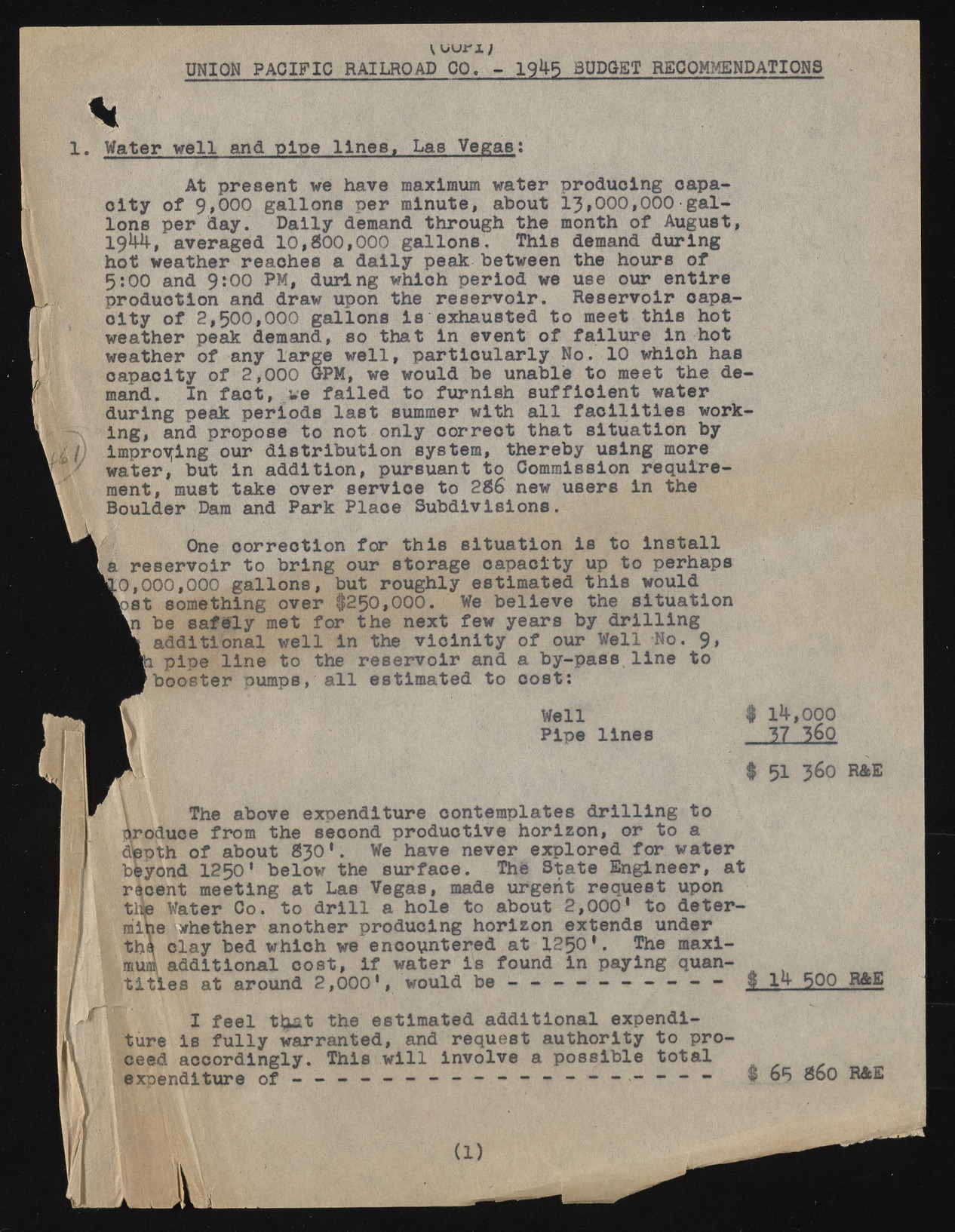Copyright & Fair-use Agreement
UNLV Special Collections provides copies of materials to facilitate private study, scholarship, or research. Material not in the public domain may be used according to fair use of copyrighted materials as defined by copyright law. Please cite us.
Please note that UNLV may not own the copyright to these materials and cannot provide permission to publish or distribute materials when UNLV is not the copyright holder. The user is solely responsible for determining the copyright status of materials and obtaining permission to use material from the copyright holder and for determining whether any permissions relating to any other rights are necessary for the intended use, and for obtaining all required permissions beyond that allowed by fair use.
Read more about our reproduction and use policy.
I agree.Information
Digital ID
Permalink
Details
More Info
Rights
Digital Provenance
Publisher
Transcription
V u u r x / UNION PACIFIC RAILROAD 00. - 1914-(5 BUDGET RECOMMENDATIONS 1 . Water v e il and pipe lin e s, Las Vegas; At present we have maximum water producing capac ity of 9,000 gallons per minute, about 1 J , 000,000 gallons per day. Dally demand through the month o f August, 1944, averaged 10,800,000 gallons. This demand during hot weather reaches a daily peak between the hours of 5:00 and 9*00 PM, during which period we use our entire production and draw upon the reservoir. Reservoir capac it y o f 2 , 500,000 gallons is exhausted to meet this hot weather peak demand, so that in event o f fa ilu re in hot weather of any large w ell, p a rticu larly No. 10 which has capacity of 2,000 OPM, we would be unable to meet the demand. In fa c t, > e fa ile d to furnish su fficie n t water during peak periods la st summer with a ll fa c ilit ie s working, and propose to not only oorreot that situation by H) improving our distribu tion system, thereby using more y water, but in addition, pursuant to Commission requirement, must take over servloe to 286 new users in the Boulder Dam and Park Plaoe Subdivisions. One correction for th is situation is to in sta ll a reservoir to bring our storage capacity up to perhaps *0,000,000 gallons, but roughly estimated th is would 5St something over $250,000. We believe the situation n be safSly met for the next few years by d r illin g additional well in the v ic in ity o f our Well No. 9 , h pipe lin e to the reservoir and a by-pass lin e to booster pumps, a ll estimated to oost: Well $ Pipe lin es Ilf, 000 77 ,7,60. $ 51 360 R&E The above expenditure contemplates d r illin g to produce from the seoond productive horizon, or to a depth of about 830'. We have never explored for water beyond 1 2 5 0 ' below the surface. The State Engineer, at rdoent meeting at Las Vegas, made urgent request upon tlie Water Co. to d r ill a hole to about 2,000' to determine whether another producing horizon extends under the clay bed which we encountered at 1 2 5 0 *• The maximum additional co st, i f water is found in paying quan-tit le s at around 2 ,000', would b e - - - - - - - - - - $ 14 500 RfiE f I fe e l tljst the estimated additional expenditure is fu lly warranted, and request authority to proceed accordingly. This w ill involve a possible tota l expenditure of - - - - - - - - - - - - - - - - - - - $ 65 860 R&E ( 1 )

